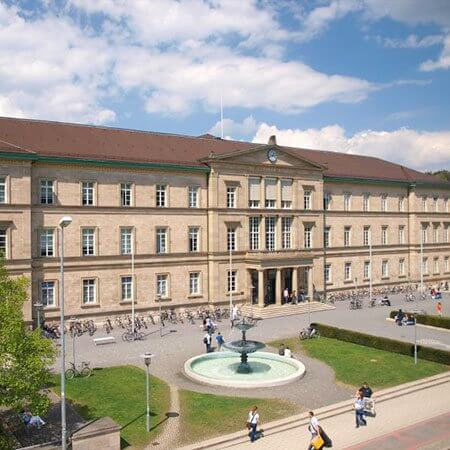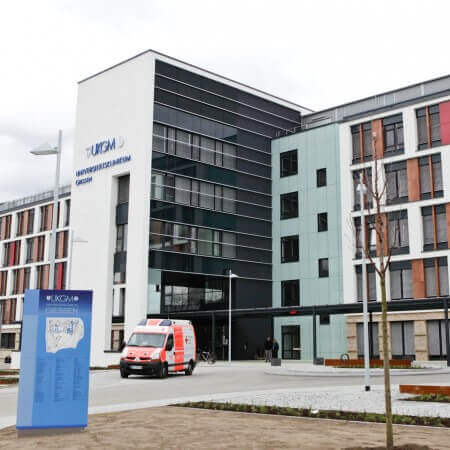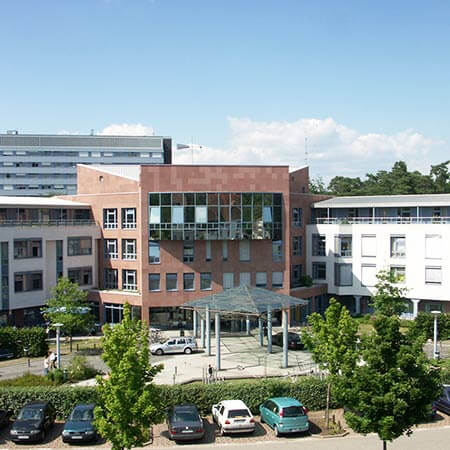Astrocytoma is one of the most common primary spinal cord tumors. It develops in its parenchyma, that is, it is intramedullary. In most cases, this is a benign neoplasm, but malignant astrocytomas also occur. You can cure this disease abroad with minimal health risks.
Content
- What is spinal cord astrocytoma
- Surgical removal of astrocytoma
- Radiation therapy for astrocytoma
What is spinal cord astrocytoma
Astrocytoma is a glial tumor that grows from astrocytes. In adult patients, it is the second most common intramedullary tumor of the spinal cord after ependymoma. In children under 10 years of age, astrocytoma is the most common glial tumor, accounting for 90% of cases, and in adolescents this indicator is 60% of cases.
It can be of different histological types. There are tumors with separated or infiltrative growth. The tumors with separated growth are classified as grade 1. They have clear boundaries, so it is easier to totally remove such neoplasms. The tumors with infiltrative growth have the worst prognosis. They grow by destroying nearby normal tissues.
Histological types:
- Spinal cord piloid astrocytoma (spinal cord pilocytic astrocytoma) is more common in children. In 70% of cases, this tumor has a clear dissection plane between the tumor and the brain matter. It is among the 1st grade (G1) neoplasms.
- Fibrillary astrocytoma (G2) is a more aggressive tumor capable of infiltrative growth.
- Anaplastic astrocytoma of the spinal cord (G3) is a malignant neoplasm that often recurs after removal.
- Glioblastoma (G4) is the fastest growing, incurable tumor.
Astrocytoma usually develops in the cervical or thoracic region.
Most of these neoplasms are benign. Anaplastic astrocytoma of the spinal cord and glioblastoma together account for only 10% of cases.
Surgical removal of astrocytoma
Tumor resection is the best treatment option. It relieves neurological symptoms and provides better survival rates when compared to radiation therapy. Even with incomplete removal and suboptimal adjuvant (postoperative treatment), a person can live for many more years, sometimes tens of years, since spinal cord astrocytomas usually show low biological aggression and progress very slowly.
Goals of treatment:
- Removal of as much of the tumor as possible (ideally, total resection).
- Preservation of the functions of the spinal cord.
- Control of the tumor, suppression of its growth.
- Prevention of complications and control of complications (spinal deformities, infections, etc.).
Astrocytoma resection can be as follows:
Whenever possible, extrafocal en-bloc resection is performed (surgical removal of the entirety of the tumor without violating its capsule). Thus, the neoplasm can be totally removed without exposing its surface. The incision is made outside the borders of the tumor. This is how the principles of ablastics are observed – cancer cells do not scatter in the wound, so the risk of recurrence is lower. However, such an operation is more traumatic. As a rule, it is necessary to completely remove the vertebra located at the level of the neoplasm.
Nonetheless, such a type of resection can rarely be performed. Doctors often resort to intrafocal resection. The neoplasm is removed in parts, but not always completely. The resection can be:
- Total – removal of the whole tumor.
- Subtotal – removal of more than 90%.
- Partial – removal of more than 50% of the tumor tissue.
If possible, doctors try to remove the astrocytoma completely. This can often be done because in most cases spinal surgeons have to deal with benign neoplasms.
Nonetheless, total tumor resection is not always possible. Most often, it is performed for spinal cord piloid astrocytoma, which has clear boundaries. With most other astrocytomas that have an infiltrative type of growth, the tactics of the safest removal are used – the doctor resects as much of the tumor tissue as possible, while trying to cause as little neurological deficit as possible.
The best clinics abroad use high-precision preoperative and intraoperative diagnostic tests, which help to achieve the most radical removal of the tumor with minimal health risks. Neurosurgeons use:
- Contrast-enhanced MRI or PET – for determining the boundaries of the tumor.
- Intraoperative neuronavigation and neuroimaging.
- Intraoperative electrophysiological testing – the doctor continues to remove the tumor until the first signs of dysfunction of the spinal cord appear (change in the parameters of evoked potentials).
For malignant neoplasms, fluorescent-guided navigation is used. The doctor uses a drug that accumulates in the tumor tissue and illuminates it. This allows the neurosurgeon to more effectively distinguish the tumor from the normal spinal cord in order to remove as much of the malignant astrocytoma as possible.
Radiation therapy for astrocytoma
In case of benign neoplasms, which account for most of the spinal cord astrocytomas, radiation therapy is rarely used. The tactics are usually as follows:
- The tumor is removed, but no adjuvant radiation therapy is prescribed.
- Even if the neoplasm is not totally removed, the patient is only monitored. In most cases, the pathology progresses very slowly, so there is no need for additional treatment.
- In the event of a relapse, the first choice treatment option is surgery.
- Only after the second surgery can radiation therapy be performed – for adjuvant treatment or in case of repeated relapse.
Irradiation is used mainly for malignant types of astrocytoma. Radiotherapy is always conducted after surgery. In addition, the method can be used instead of surgery, if surgical treatment is contraindicated.
Doctors abroad use the very latest methods of radiation therapy. They are very accurate and direct the rays from different sides in order to minimize damage to the healthy tissues. With such irradiation, the risk of spinal deformity and instability is lower. Some clinics use stereotactic body radiation therapy. It allows destroying the tumor within just one or several sessions.
To undergo spinal cord astrocytoma treatment abroad, please use the services of Booking Health. We will select the best clinic for you and take care of the organization of your trip. On the Booking Health website, you can compare prices and book a medical care program at a favorable price. The cost of treatment for spinal cord intramedullary astrocytoma will be lower for you due to the lack of additional coefficients for foreign patients.
Authors:
The article was edited by medical experts, board certified doctors Dr. Vadim Zhiliuk and Dr. Sergey Pashchenko. For the treatment of the conditions referred to in the article, you must consult a doctor; the information in the article is not intended for self-medication!
Sources:
Verywell Health
Medscape
Healthline












